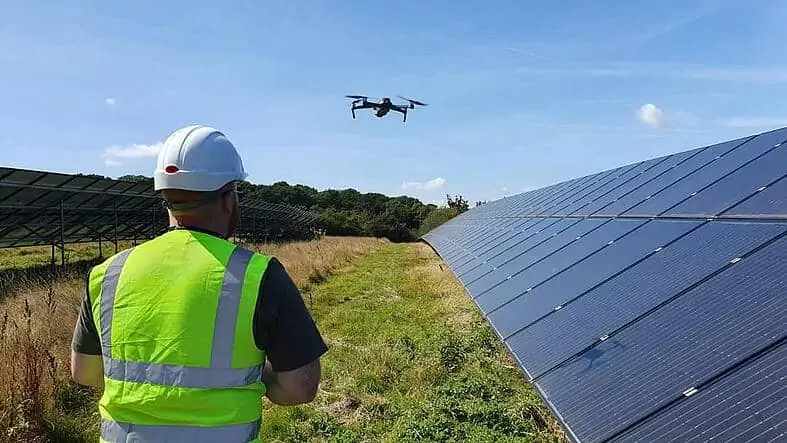SOARIZON has released the following article that outlines how power and utilities industries such as oil and gas, wind farms and hydroelectric power are using unmanned aerial vehicles (UAVs) to increase safety and efficiency. SOARIZON is a state-of-the-art drone operational management solution that provides all the necessary tools and processes for drone pilots and organisations of any size in a single secure and dynamic workflow.
Safety is a critical concern for any company operating in the power and utilities sectors, and many are turning to drone technology for a remote inspection and monitoring solution that can maximise the efficiency and safety of plant operations, complete tasks in a fraction of the time, and eliminate the need to put workers in harm’s way. This article examines some specific use cases where drones are already being used to optimise safety and efficiency.
Oil and Gas
Many oil and gas companies are switching to drone technology in their inspection and maintenance procedures. Use cases for drones in this space include inspections of chimneys, storage tanks, refineries, and offshore rigs. Drones can also be used to internally inspect the smaller spaces of chimneys that are simply too dangerous for humans. In pipeline leak detection, drones carrying thermal imaging payloads can detect hazardous materials and mitigate potential gas leaks that could cause electrical fires. Additionally, drones are able to provide a quick evaluation of hard-to-reach areas, and can capture high-quality data and imagery of the inspection area.
Power Lines
Traditional methods of powerline inspection can pose great risks for technicians, who must work at heights with many hazards to be assessed and mitigated against. The increase in drone technology means that there is now a significantly reduced need to put humans at risk when surveying and repairing the pylons and wires of power lines. Similar to roof assessments, these inspections can occur in hazardous conditions such as in extreme weather, exacerbating an already dangerous task. Drones can be used to inspect power lines in their entirety, reducing worker risk and allowing inspections to be completed more frequently with a higher level of accuracy, helping to reduce downtime and power outages.
Solar Panel Inspection
In recent years, drones have become a vital tool in the inspection of solar panels. Compared with traditional methods that use handheld thermal imagers, drones have the power to collect data many times faster, decreasing the need for long and hazardous man-hours and thus minimising risk. Drone-based inspection provides time-saving and efficiency benefits, allowing operators to detect more potential flaws in the solar panels.
Wind Turbine Inspection
Inspection and repairs of offshore wind installations can typically be costly, time-consuming and dangerous, and drone technology is increasingly being adopted by the industry as a safer, more dynamic alternative.
The conditions which wind turbines must endure can be unforgiving. At heights of up to 800ft, they are constantly exposed to extreme weather including rain, lightning, hail, snow, and salt, all of which make for high-risk working environments for workers using ropes and platforms. By using drones, operators are able to safely inspect these components, with the addition of technology such as thermal imaging helping to identify issues early on that would have otherwise worsened, leading to costly repairs.
Dams and Hydropower Plants
Over the past few years, dam safety has become an increasingly important issue, with concerns over the risks they can pose both to onsite workers and people in surrounding areas. Drones help to keep the operator away from potentially hazardous areas, enabling safe inspection of the plant with topographic mapping, volumetric surveying, and structural assessments. Increased inspection also helps to offset the risk of serious incidents such as structural collapse or flooding.
The broad application and versatility of drones in this space have introduced more accurate, safe, and efficient ways of working. As the use cases for drones in the power and utilities sector continue to grow, so will the technological advancements that play such a key role in improving the safety and efficiency of the plants.
How SOARIZON is helping utilities and power clients
SOARIZON enables drone operators in the power and utilities sectors to manage entire operations and keep a central point of record. Users can manage their fleet, personnel, projects and missions in one system, with intuitive and powerful mission planning, and ensure compliance with standardised workflows and a secure, digital archive.



















